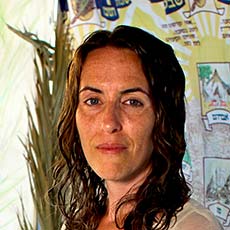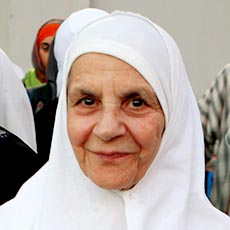Use the Google maps controls to explore the confluence of the Ganges and Yamuna Rivers from above.
Kumbh Mela
Premiered December 30 at 8/7C
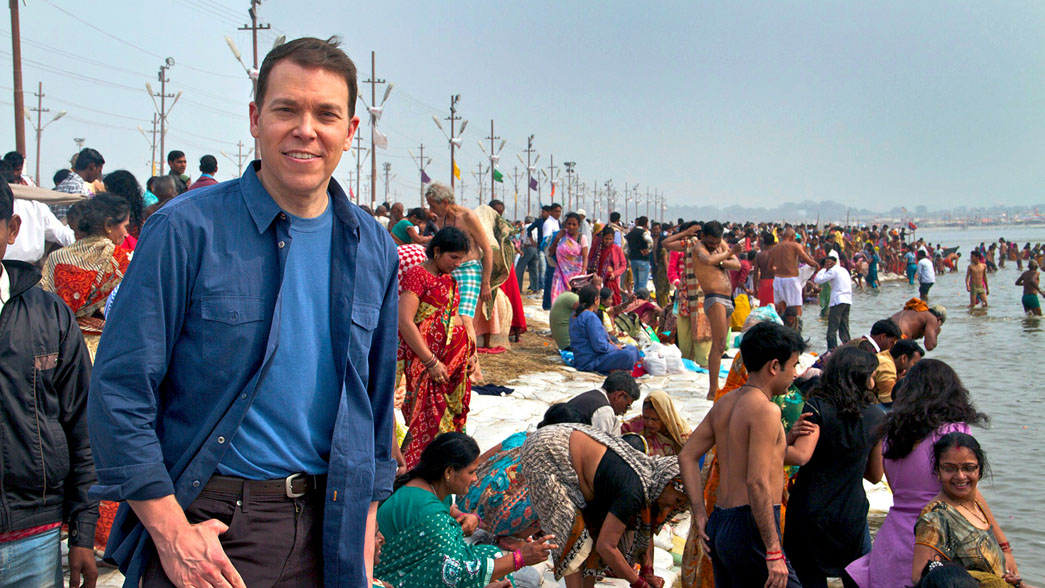
Kumbh Mela: At A Glance
Every twelve years, tens of millions of men, women and children gather on the flood plain of the Ganges and Yamuna Rivers in Allahabad, India, for the Kumbh Mela, the largest gathering of humanity for religious purposes on the planet. Pilgrims come from across India and around the world to bathe in the water where the two sacred rivers meet. Such mass bathing in the Ganges has been recorded for more than 2,500 years.
| Religion: | Hinduism |
| Earliest pilgrimage on record: | 629-645 CE |
| Frequency: | every 4 years; every 12 years in the city of Allahabad |
| Duration: | 55 days long |
| Participants: | More than 100 million per year |
| Following in the footsteps of: | Lord Vishnu |
Explore a Map of the Kumbh Mela
Begin the Journey

Varanasi
Travel to India’s holiest city for aarti, a lamp ceremony.
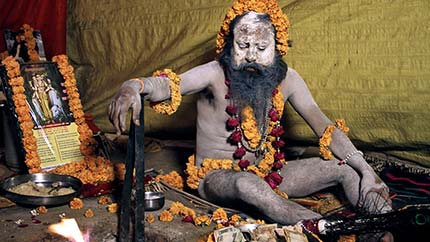
Allahabad
Head upriver to the heart of the Kumbh Mela camp.
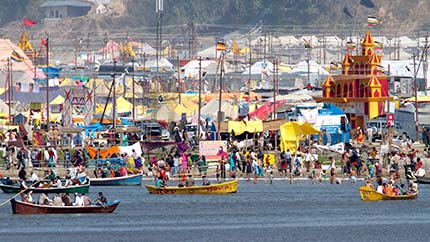
The Ganges
Bathe in the waters at the confluence of two sacred rivers.
Varanasi
For many Hindus, a visit to the holy city of Varanasi precedes their pilgrimage to the Kumbh Mela, a city located about 75 miles away from the main site of the festival. Worshippers are called to visit Varanasi at least once in their lives, to bathe in its sacred waters. A key part of the Hindu faith is that life is a cycle of living, dying and reincarnation. Each rebirth is dependent on how the previous life was lived. For believers, a pilgrimage to the Kumbh Mela to bathe in the Ganges's sacred waters is way to increase one's spiritual awareness and move toward higher and higher states of being.
Varanasi is also considered the holiest place on earth for Hindu cremation because the body's ashes can be sprinkled into the sacred river; ash is therefore a prevalent symbol at the Kumbh Mela.
Explore Varanasi
Bruce Feiler's Notes from the Field

Mother Ganga
Celebrate Mother Ganga, the giver of life, in a Hindu ceremony that takes place every night in Varanasi called aarti.
"It's the land of spirituality so we're all hoping to capture some of that."
—Shambu Misra, pilgrim to the Kumbh Mela
Allahabad
A four-hour drive brings pilgrims to the holy city of Allahabad where they will partake in the bathing ritual at the confluence of the Ganges and Yamuna Rivers. At the pilgrimage's peak, Allahabad is the temporary home to 30 million people, many of whom live in the tent cities that line the river's edge. During their stay, pilgrims will also practice yoga and meditation, and listen to the teaching of gurus, especially Swamiji, a spiritual leader with millions of followers worldwide.
Bruce Feiler's Notes from the Field
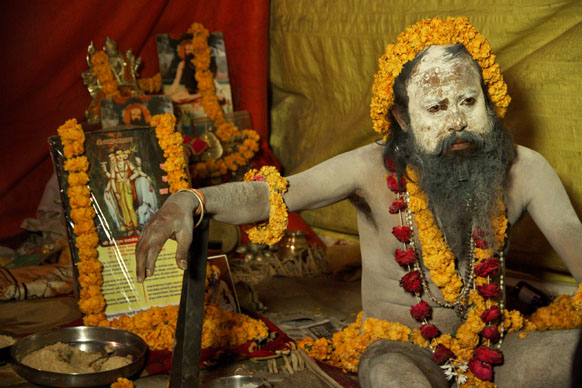
The Naked Holy Men
One of the most well-known symbols of the Kumbh Mela is the naked men known as naga sadhus. Why are they naked, and what happens when host Bruce Feiler joins a holy man in his tent? Take a look.
"I've never seen anything like this before. I am blown away right now, completely blown away."
—Karmen Plasencia, pilgrim to the Kumbh Mela
The Ganges
The climax of the Kumbh Mela takes place when Jupiter completes its 12 year cycle and the planets are in alignment. The naga sadhus—the iconic naked holy men of the Kumbh Mela—parade en masse to bathe in the waters of the Ganges River, followed by the millions of pilgrims who have also come to partake in this holy ritual. Pilgrims traditionally submerge themselves in the water three times: once for one's mother, once for one's father, and once for Mother Ganga.
Explore the Ganges River
Bruce Feiler's Notes from the Field

Bathing in the Ganges River
Is it possible to be alone among thousands of people? Watch how pilgrims find solitude during the ritual bathing in the Ganges River.
"Even though there's millions of people around here, I feel at one with myself."
—Peggy Misra, pilgrim to the Kumbh Mela
"It doesn't matter that the crowd is one million or fifty million, it's the undercurrent of devotion."
—Sue Kenney, pilgrim to the Kumbh Mela
Kumbh Mela: Gallery
More from PBS

The Story of India
In this landmark six-part series, Michael Wood embarks on a dazzling and exciting journey through today's India.

Walking the Bible
Join Bruce Feiler on an epic, ten thousand mile odyssey to explore the greatest stories ever told, in the settings where they occurred.

The Buddha
Narrated by Richard Gere, this documentary tells the story of the Buddha's life, a journey especially relevant to our own bewildering times of violent change and spiritual confusion.




